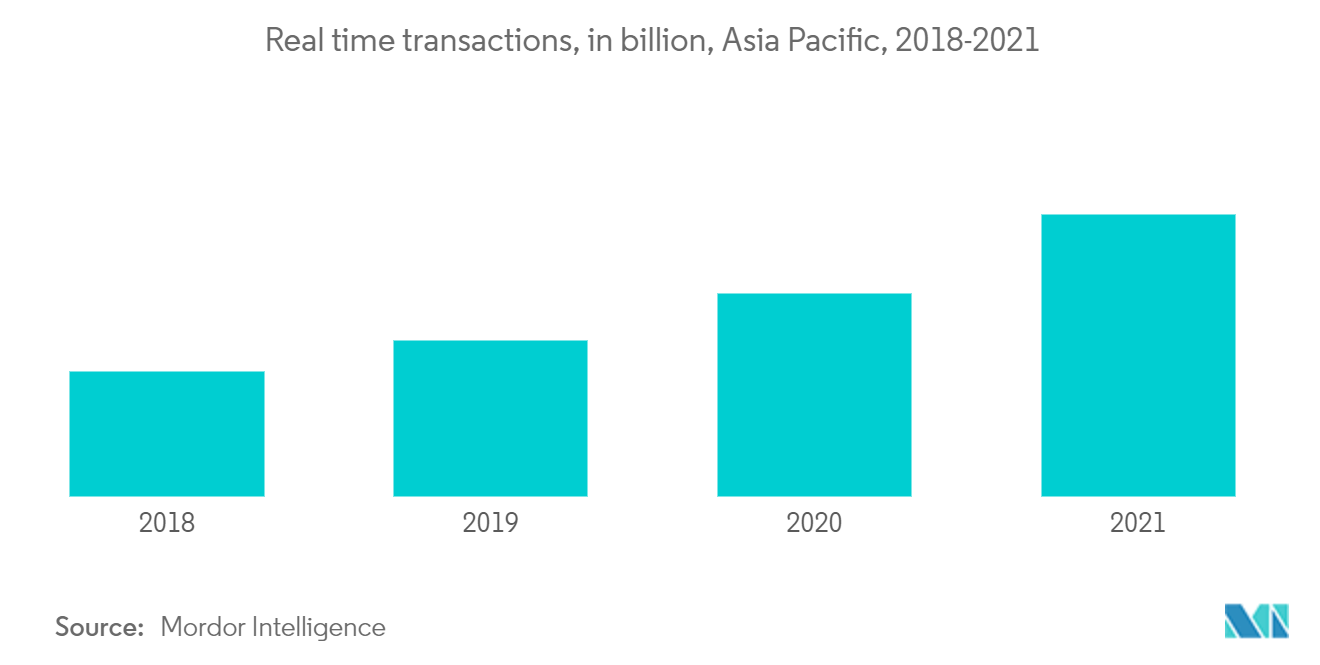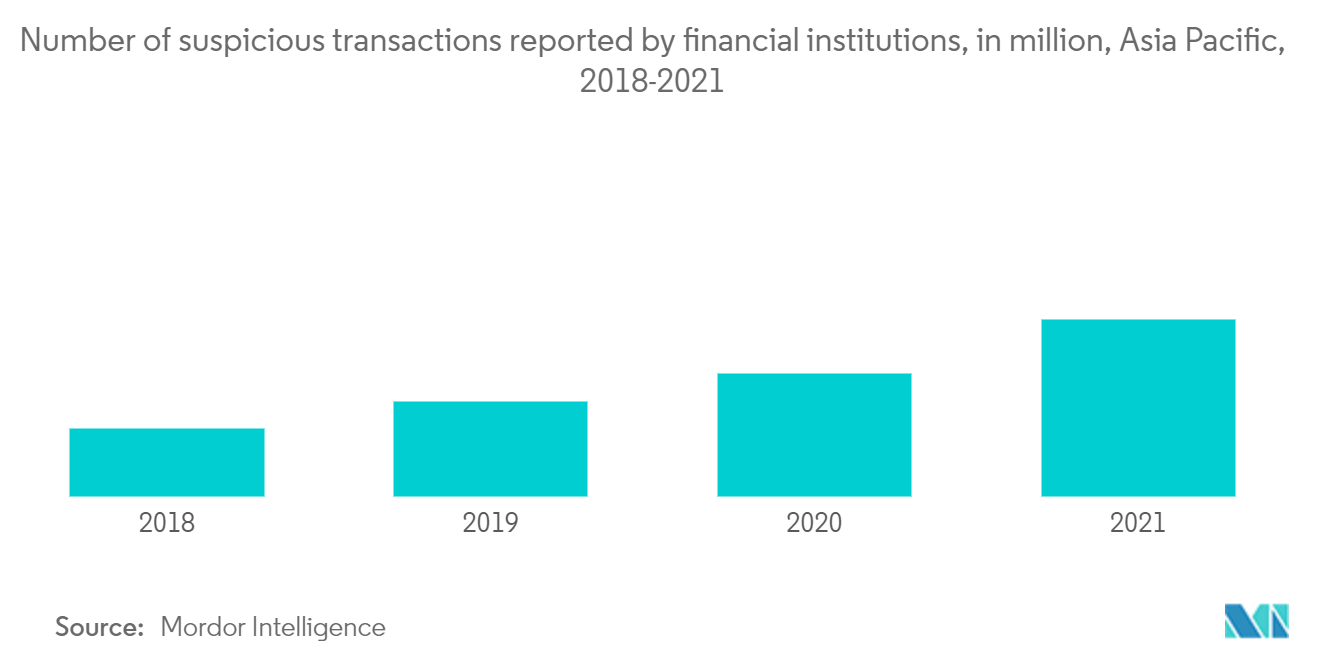Market Trends of Asia Pacific Anti Money Laundering Solutions
This section covers the major market trends shaping the APAC Anti Money Laundering Solutions Market according to our research experts:
Rise in the Volume of Wired Transactions Driving the Market
Asia-Pacific is the most developed real-time payments market globally. Thailand is the largest country in the volume recorded 9.7 billion real-time transactions in 2021, the fourth leading country in the world. The widespread adoption of real-time payments resulted in estimated cost savings of USD 1.3 billion for businesses and consumers.
In 2021, Malaysia recorded 1.2 billion transactions, accounting for an estimated USD 434 million in cost savings for businesses and consumers, whereas Singapore witnessed real-time payments transactions hit 256 million and realized approximately USD 105 million worth of cost savings for businesses and consumers.
Real-time transactions and growth are expected to rise continuously, with emerging countries like India leading the way and outpacing developed nations. Governments around the globe that enable real-time schemes are driving economic growth and prosperity by providing consumers and businesses with cheaper, faster, and more efficient payment methods.

Increased Need for Automated Transaction Monitoring Systems Boosting the Market
Demand for automated transaction monitoring systems is growing substantially in Asia-Pacific, especially in countries like China and India. In the current pandemic scenario, financial institutions face an even larger challenge in AML and terrorist financing. Public firms are taking preventive measures to combat jobless people involved in money mule scams. Financial criminals started developing more advanced money laundering methods as technology advanced. Criminals detect gaps in financial systems and commit crimes such as money laundering and terrorist financing. It is hard for financial institutions to detect and prevent these financial crimes.
So, companies automatically monitor their customers' transactions, such as deposits, withdrawals, and money transfers, and can present any suspicious activity as evidence so that financial institutions can ensure they meet AML Compliance requirements using AML Transaction Monitoring.


